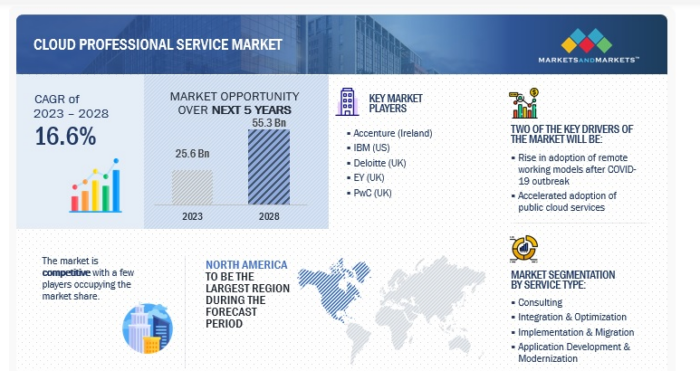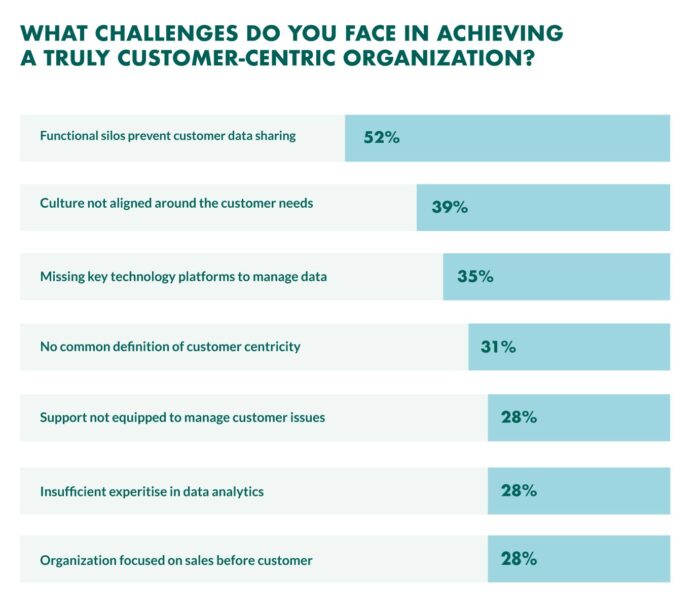
Article source: https://www.eglobalis.com/from-here-to-affinity-how-to-build-client-centricity-in-professional-services/
Professional services (PS) and consulting is critical to client experience. But, here’s the question: if your competitors could do the same job, and have similar knowledge, expertise, capabilities and pricing, how do you stand out? In other words, how do you escape a parity trap?
From a client perspective firm offering CX-related PS / consulting – in enterprise technology, telecoms, electronics, and beyond – are superficially similar. The differentiators many teams rely on aren’t differentiators at all. They’re a given. Technical competency / product knowledge, professional qualifications and expertise are pre-requisites. Clients assume service and product quality. Delivering a project on time and to budget is expected. The way to stand out is by becoming a value-adding partner, building affinity and becoming a trusted partner and advisor.
This means ensuring that your PS and consulting should be strictly aligned with your experience management approach – as part of your company culture. There’s a lot of jargon in CX. We hear a lot about ‘new frontiers’. But, client focus is an absolute priority for teams stuck in traditional sell, deploy, go mode. Let me give you an example of leaders are creating competitive advantage. (I use cloud professional services examples throughout, but there are valuable lessons here for everybody). Let’s continue.
Becoming a value-adding partner in cloud professional services
Helping clients realise the full value of their cloud investment
Capgemini was positioned in the Leaders category in the IDC MarketScape Worldwide Cloud Professional Services 2022 Vendor Assessment. The reason? Its cloud consulting team matches each client’s end-to-end business objectives with the company’s end-to-end cloud capabilities to simplify, secure, and accelerate the cloud journey.
There is a significant opportunity for firms like Capgemini to increase market share by adding value in ways competitors don’t. Let me explain. If there’s one word that defines the start to the ’20s it’s disruption. Organisations have accelerated cloud initiatives as a strategic response. Rapid cloud and digital transformations are key priorities. Accenture (another market leader) reported that while more than 86% of companies had increased cloud initiatives since 2020, only 42% had fully achieved the outcomes they expected (cost saving was the most elusive).
Cloud adoption is complex with persistent barriers to unlocking the full value of the investment. It often requires new ways of thinkng: business realignment, operational change or a shift in culture of adaptation . This is the language of CX. Clients need more than a team that simply delivers managed services, for example.
In many cases, the low hanging fruit has already been picked. As Accenture explains on its Cloud Services page – businesses must focus beyond simply “getting there” to “getting value” and then “operating in the Cloud Continuum to unlock the next level of innovation’.
The market opportunity

Source: MarketsandMarkets
The global cloud professional services market is forecast to double in the next five years to USD 55.3bn.
Source: MarketsandMarkets
The opportunity to secure market share is there. Why should a client choose your business? IDC’s Douglas Hayward advises: “CX services vendors come in all shapes and sizes and finding the right one means looking beyond price and focusing instead on the vendor’s capabilities, its people quality, and its strategy for your enterprise.”
As discussed earlier, the way to stand out is by becoming a value-adding partner, building affinity and becoming a trusted advisor. Clients want more than a technical team. We live in tough times. An endless cycle of economic, political and social events are becoming the new normal. Clients are also seeking allies for advice on consumer, business, industry and market dynamics. They are seeking partners to help then navigate the challenges ahead – known and unknown, and position the brand for future growth. Teams that put the client at the heart of what they do will be better placed to deliver here.
How to build client PS centricity
Change management is often the hardest part of CX. This will take work, a lot of time and effort. Most businesses in general don’t have all the elements in place to be truly client centric.

Source: SuperOffice
Source: SuperOffice
It’s important to note that these challenges are even more acute in PS and consulting. Teams are hired because they are qualified in their specific field / discipline. Firms don’t tend to hire people who are multi-disciplinary with strong CX or even data analytics skills.
Where do you start?
Here are seven practical and pragmatic steps to ensure that your PS and consulting teams – and their delivery – embody your company culture and provide a well-designed CX.
Embedding a client focus starts with your culture. It’s the driver of a distinctive CX. Everybody needs to embrace the new way of doing things. Your culture is your start and end point – for your business, for your professional services. As the SuperOffice graphic earlier showed, culture not being aligned to client needs is a major barrier to client centricity.
Rethink your culture
Your culture is built on shared purpose, values, beliefs, attitudes, standards and behaviour. Essentially, it’s what you think, preach and do. The impact it has on your PS and consulting, and on any client interaction, is considerable. It’s best to get it right the first time.
To change a culture you need to start at the top. Leadership across the business needs to share (or create) a clear client-centric vision and aspiration, linked to value. Senior executives need to then use their leadership to role model and demonstrate a commitment to the renewed client focus, and bring their PS / consulting team with them.
Mindsets and behaviour will need to change. Take the time to understand the root causes of any behaviour that you want to change. Encourage and reward behaviour that delivers your ‘brand’ of experience.
Once you have established your culture, you need to make sure your team embodies your culture to give your clients a great experience. Empower and enable your staff – whether they are client-facing or not. Internal or external teams all need to have the client as the focus of their work.
This starts with the hiring process.

Hire, and nuture, multi-disciplinary talent
As discussed earlier, people are hired because they are qualified and experienced in a specific field. Most are not recruited because they have multi-disciplinary skills or business acumen. Leaders do things differently. BT Cloud Professional Services, for example, assures visitors on its website that it hires for purpose: ‘We’ve spent a lot of time putting together a team that combines service and customer experience.’
Your HR leadership needs to embrace a client-centric culture. When hiring people to deliver PS / consulting – whether those services are strategy-oriented or technical – the key is to bring in multi-disciplinary talent. People who have an understanding of CX and data analytics skills. Soft skills like emotional intelligence and empathy are crucial. Everything needs to be backed up with client, industry and market knowledge, and business acumen.
Invest in learning & development (L&D)
Your culture should run through your onboarding programme. It’s imperative new hires digest and adopt the company’s values, principles, and purpose. Don’t stop there. Leaders offer a continuous L&D strategy that enables team members to help them evolve as your ‘brand’ of CX evolves. Provide employees with the training, tools and methodologies that will enable them to deliver your experience.
Understand your clients
Listen, learn, leverage. Gain a deep understanding of your clients. What are their needs, preferences and pain points – now, and in the future? Take the time to understand their business goals and barriers. Focus on understanding how to help clients maximise the value of your products and services.
Your team needs to get good at harnessing the power of your data to be truly client centric.This is critical to understanding how you can create value and innovate in ways that your competitors don’t. CX leaders are already powered by connected data and capabilities to do this in real-time.
However, as the SuperOffice research earlier showed, siloed, functional data and a lack of data ananlytics expertise are among the biggest barriers to client centricity.
Here’s the curve ball. This may sound counter-intuitive but as McKinsey reports, even those technology companies that use customer data to drive their business, or improve their offerings, often struggle with managing their own operational data.
The takeaways here:
Invest in an AI-driven Customer Data Platform to leverage real-time insights and make quicker and more responsive data-led decisions.
Centralise your data to give your people a holistic view of your clients in real-time
Ensure that interactions are intelligence-led and a two-way dialogue
Finding a data solution
Customer Data Platform adoption is gaining traction as businesses (in all sectors) seek solutions to enable CX priorities. Firms that invest now have an opportunity to create competitive advantage. There are many solutions on the market including Salesforce. Salesforce offers professional services an industry-specific, Client-Centric Performance platform that unifies data across the whole firm. As the company explains: ‘Expertise is backed up with rock-solid data, enabling firms to offer deeper insights and more holistic service to their clients. Teams can grow their knowledge and expertise, be a more valuable partner, and demonstrate their value to clients.’
Map the end-to-end journey
Journeys are all about clarity, direction and value. Journey mapping is probably not new to you. You’ll have heard a 1000 times that you need to identify the key touchpoints that are a moment of truth with our customers. As you already know these ‘moments’ are interactions where emotions run high and clients are most invested in the outcome. Quid pro quo, these are times when your team most earn trust and loyalty.
Don’t get blinkered by the touchpoints that PS / consulting teams traditionally focus on. These are usually transactional touchpoints where the client is contact. Buyers are forming opinions of your firm before you even know about them. Map the end-to-end journey from research through to post-sales.
Work out how to value beyond current needs and expanding existing touchpoints. Think about creating new long-term relationships to collaborate with customers as the basics, with that focus on touchpoints to strengthen the relationship even when you’re not actively providing service. Don’t go into airplane mode. Keep the dialogue going to gain new insights and build loyalty and trust with partners and customers.
Continuously improve
Client centricity isn’t a one-off exercise. CX leaders have a relentless commitment to improve and innovate. Regularly review and analyse client and team feedback, identify trends, and implement changes to enhance the client experience.
Make your client the marker of success
Monitor and measure success metrics that value the client. Many firms still benchmark performance metrics that are product or project led, or in the interests of the firm like hitting sales targets.
To conclude
Businesses offering related professional services / consulting without a professional approach for customer centricity are at risk of being left behind by leaders who have been quick to understand that competitive advantage doesn’t come traditional routes. Pioneers are building client centricity across their firm. They are becoming trusted, value-adding partners.
Value is created through client insights. Connected, real-time data is the powerhouse behind decision-making and intelligence-led interactions. Dialogue and communication is consistent, inside and outside, of transactions. They anticipate needs, keep one step ahead and relentlessly innovate. They understand business challenges, industry and market pressures. Everything is rooted in a client centric culture. Culture is a basic but crucial pillar that enables your organisation to really deliver great experience management in your professional services and consulting.
Sources supporting our practical claims 🙂
Capgemini positioned as a Leader in the IDC MarketScape Worldwide Cloud Professional Services Vendor Assessment
Future of Customer Experience: Why Professional Services Are Critical to CX
https://www.idc.com/getdoc.jsp?containerId=US49424922
How data can help tech companies thrive amid economic uncertainty
https://www.mckinsey.com/capabilities/mckinsey-digital/our-insights/how-data-can-help-tech-companies-thrive-amid-economic-uncertainty
Cloud Professional Services Market
https://www.marketsandmarkets.com/Market-Reports/cloud-professional-services-market-13244138.html
Strength in Numbers: Why Data Is Essential to Professional Services
https://www.salesforce.com/uk/blog/2021/03/why-data-is-essential-to-professional-services.html
Accenture Cloud Services
https://www.accenture.com/hu-en/cloud/services-index
BT Cloud Professional Services
https://www.globalservices.bt.com/en/solutions/products/cloud-professional-services



